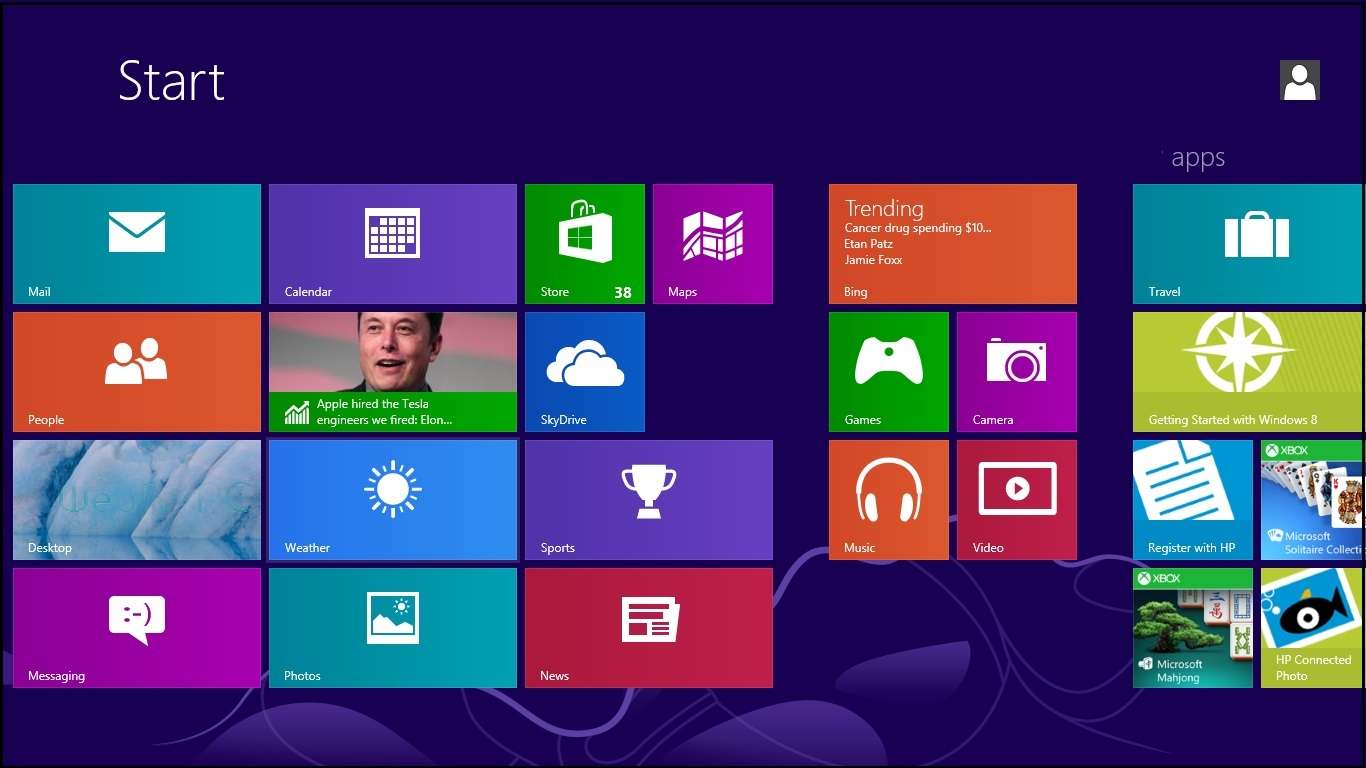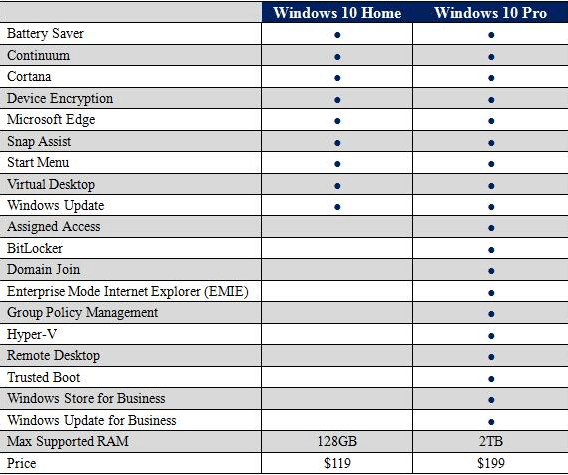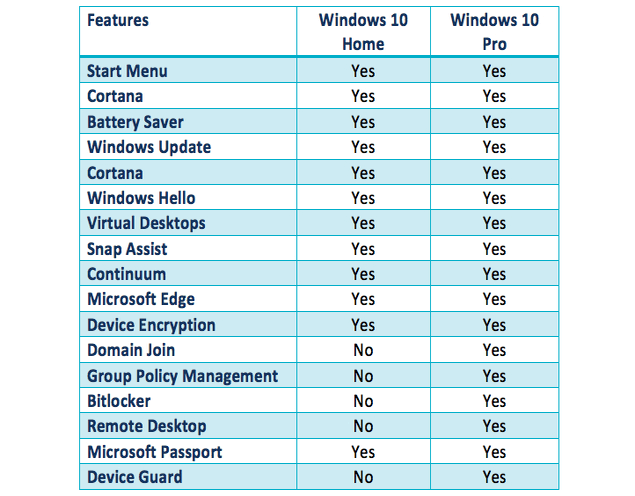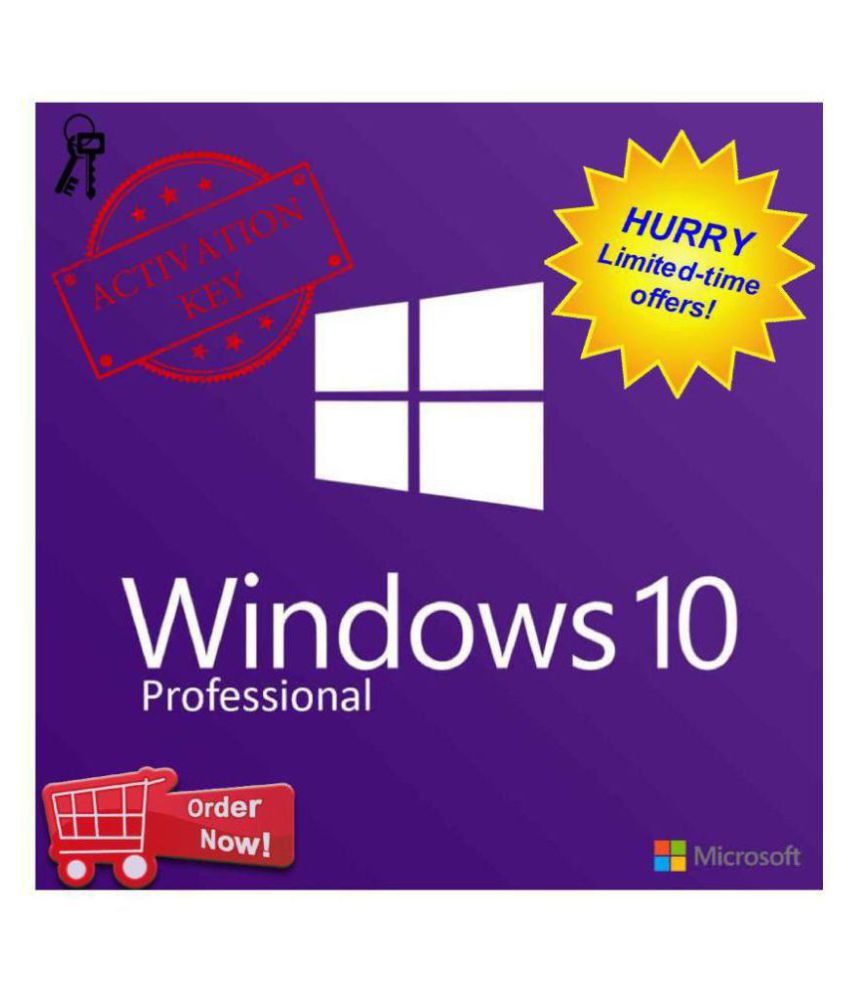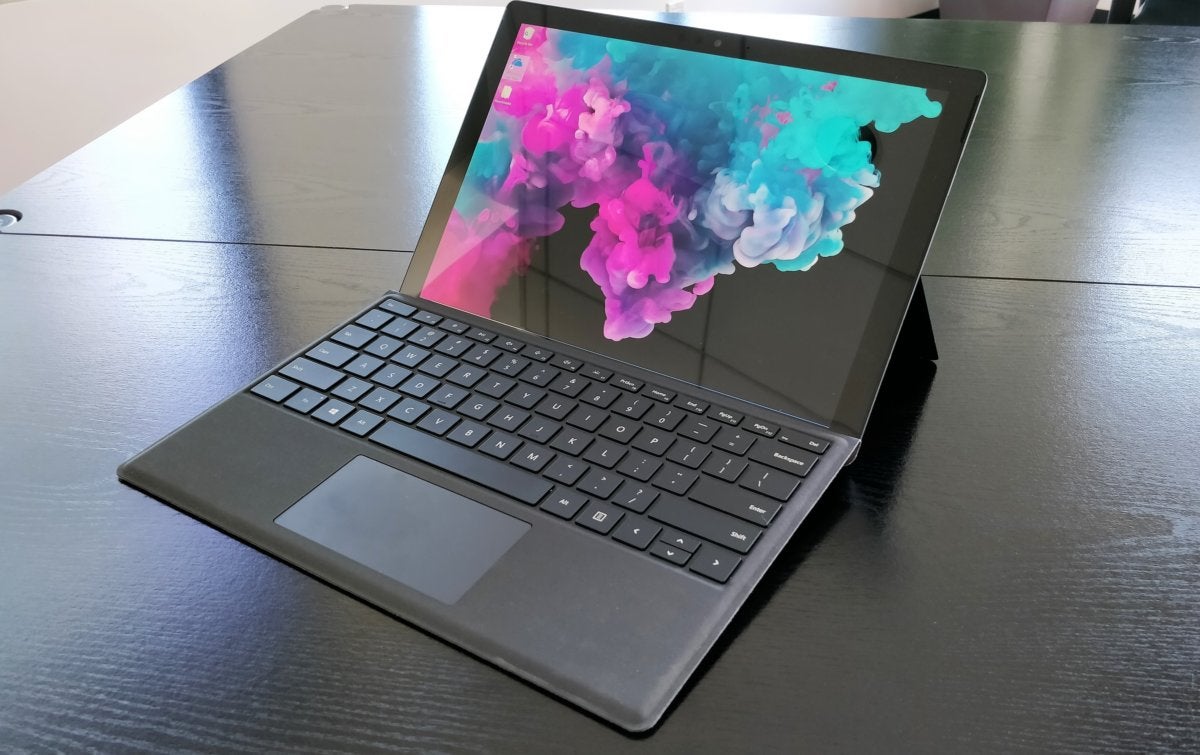This version of the Windows 10 has been built on the line of Windows 10 Home. The OS helps the entrepreneurs to meet and deal with the diverse needs and requirements of the business world. The operating system helps the businessmen to efficiently and effectively manage their valuable business data, devices, and applications. It helps in supporting the remote, mobile productivity scenarios. It does all that by taking the advantages of the cloud technology.
New releases of Windows 10, called feature updates, are released twice a year as a free update for existing Windows 10 users. Each feature update contains new features and other changes to the operating system. The pace at which a system receives feature updates is dependent on the release branch from which the system downloads its updates. Windows 10 Pro, Enterprise and Education could optionally use a branch, which is defunct since version 1903, that received updates at a slower pace. These modes could be managed through system settings, Windows Server Update Services , Windows Update for Business, Group Policy or through mobile device management systems such as Microsoft Intune. These are the core differences in Windows 11 Home vs Pro editions.
As we've mentioned, most of them revolve around features meant for business users. Some are designed to protect especially sensitive information, while others have to do with quickly setting up devices for users and managing them remotely. For the average person walking into a store, you're probably going to be just fine with Windows 11 Home. The odds are if you need Windows 11 Pro, you already know you need it and why. The professional version of Windows 10 includes many extra features designed for businesses.
It has virtually everything offered by Windows Home, plus additional security and management services. This version of Windows 10 is typically purchased in bulk by companies or schools, though you can configure desktops and laptops to include it versus using Home. If you select theself-deploying mode, this only has to be completed one time.
After that, every additional Autopilot-enabled device you purchase for your business will automatically be configured to your specifications, so there's no need for manual onboarding. New users can simply unpack their laptops or desktops and start working. Windows 10 Pro comes with BitLocker that also offers full device encryption to protect your data from unauthorized access, but with extra management tools. Hyper-V is a hypervisor that allows users to run virtual machines with any version of Windows or Linux alongside Windows 10.
And Trusted Boot is another feature included with Windows 10 Pro that works with Secure Boot to protect the boot process from any kind of malare. If you need to set up a kiosk device, this edition has a feature to lock the device to use it with a single application. You can also access the Group Policy Editor to manage advanced system settings. Also, if you need to access apps and files remotely, Windows 10 Pro comes with Remote Desktop to connect remotely within the network or across the internet.
Windows 11 Pro has everything the Home version has, while also adding a few additional features, mostly serving professional environments. One of the most notable ones is BitLocker, which is a full volume encryption tool that can encrypt your drive volume using 128-bit or 256-bit AES encryption and your computer's TPM. Of course, the bulk of the differences between Home and Pro editions of Windows 11 are for businesses. Most device management capabilities aren't available in Windows 11 Home at all. Windows 11 Pro, however, supports things like Group Policy, which lets IT admins configure certain policies for groups of devices in one go.
There's also Windows Update for Business, which lets companies control how updates are rolled out to their users to avoid unexpected issues. Another difference that will be noticeable for business users is that Windows 11 Home PCs can't be joined to Active Directory. Active Directory solutions are necessary for managing business devices, such as configuring access to certain resources, deploying apps, and so on. Those are all professional tools, so they don't make sense for most Windows 11 Home users. Windows 10 Enterprise gives IT departments more freedom to manage security on their own terms. Let's get one thing straight – both Windows 10 Enterprise and Professional can fulfill the requirements of small and medium businesses.
The only difference is the extra IT and security features of the Enterprise version. You can use your operating system perfectly well without these additions. Migration and deployment tasks are handled really well by the two Windows 10 versions, and they provide the same functionality as far as management and application is concerned.
New security features like Visualization Based Security await Windows 10 Pro users. They isolate specific parts of the OS to prevent modification by malware or viruses. BitLocker, Microsoft's popular encryption software, makes it easy to encrypt removable storage devices and hard drives using various authentication modes.
Windows 10 Pro also features Hello, which combines a pin code with biometric data to grant user access to the operating system and other applications. The Home version will suffice for majority of the individuals using Windows at home. The Pro focuses entirely on security and compatibility, and ease of use. Both the Windows versions come with support for Microsoft Passport, device encryption, side-loading of business apps, and mobile device management.
Along with that, both versions can be easily upgraded to Windows 10 Education Edition. As business users often deal with especially sensitive information, there are also some extra security features in Windows 11 Pro. This feature encrypts data stored on your hard drive so no one else can access it.
Even if your computer is stolen, your files are protected from users other than yourself. Windows Autopilot, a built-in feature of Windows 10 Pro, makes it easier for small businesses to deploy new devices to employees. Microsoft, or the hardware vendor you choose to work with, will register new devices for your organization. As the business owner, you can chooseto customize the default setupby creating a profile that includes things like specific settings or apps. Azure active directory is a cloud-based management service that helps employees sign-in to specific profiles and resources.
It gives the employees the ability to access Office, the Azure portal, and thousands of other SaaS applications. It's a great tool for IT admins as it allows you to control user's access to apps and resources based on your business requirements. It allows you to set individual profiles with specified levels of access to individual resources within the business. It has Windows Defender Antivirus software, Windows Hello biometric logins that use face or fingerprint authentication, and rudimentary device encryption to minimize data breaches.
Those with multiple Windows devices will also love the mobile device management app, which allows them to track and control app usage for connected smartphones and tablets. The Enterprise version includes different security features that add to the existing capabilities of the OS. For example, Managed User Experience promotes easy management of everything, from user accounts to connection settings. The Application Virtualization simplifies streaming and app virtualization. The User Environment Virtualization gives you the chance to migrate virtual devices without changing the OS settings. Windows 10 has become the most popular operating system for desktop computers, with more than 1.3 billion active PCs running it.
Despite focusing on the new Windows 11 release—now rolling out—Microsoft continues to support Windows 10 with servicing updates. The OS continues to offer unique capabilities like touch input, a voice-based virtual assistant, face login, Windows Defender security, and mixed reality tools. Still-important but more mundane features include an improved screenshot tool, better window arrangement, and unified notifications.
The OS has reached a point of polish and functionality to earn it a PCMag Editors' Choice award. This edition was introduced in July 2016 for hardware partners on new devices purchased with the discounted K–12 academic license. It also features a "Set Up School PCs" app that allows provisioning of settings using a USB flash drive, and does not include Cortana, Microsoft Store suggestions, Windows Sandbox, or Windows Spotlight. Pro users can get updates from Windows Update for Business, which includes options for scheduling updates so they don't reboot PCs at important business times.
Windows 10 Pro includes access to business versions of Microsoft services, including Windows Store for Business, Windows Update for Business, Enterprise Mode browser options, and more. These versions include extra features to buy and upload content in bulk. Options for virtualization include Remote Desktop compatibility, Client Hyper-V, Shared PC configuration, Azure Active Directory, and more.
If you're concerned about security and want to protect your data from intruders, or you're coming from MacOS and want something comparable to Apple's Filevault, you'll want to spend the extra money on Pro. Bitlocker provides full disk encryption so you can keep your data safe from hackers. The latest iteration of Bitlocker also allows for the encryption of individual files for more flexibility than the all-or-nothing approach of previous versions.
Again, other software can accomplish similar encryption, but it's not built into the OS. Be sure to get an SSD that supports the necessary hardware acceleration for Bitlocker if you don't want to lose performance. Microsoft has offered a Pro version of Windows since the XP days, bringing with it additional features for power users that Home doesn't offer. Here's a breakdown of the most useful features that you get with Windows 10 Pro, as well as free alternatives, when applicable.
Microsoft has also been commendably wary of forcing businesses to install the same rolling updates to Windows 10 that are now mandatory for consumers, who can no longer opt out of Windows Updates. Windows 10 Pro users, meanwhile, can defer updates, giving new features a few months to bed down on consumer systems before they're applied to a business machine. The new operating system helps to protect the devices and data with a lot of control and flexibility. So, even if any unexpected things happen, you know you have all the data and facts about your business safe and within a quick access.
There are a lot of newly introduced security features in the new operating system that can help your business in preserving and managing important data and information. The best part of using Microsoft Windows 10 will probably be the safety of data and information even if you lose the device. The anti-malware technology and anti-phishing features are far better in preserving documents than biometric authentication and passwords. The Windows 10 Enterprise has been built upon the features of Windows 10 Pro and has a bit more advanced feature that the former. If you are running an organization of substantial size, there are features in the Windows 10 Enterprise that will be useful for you.
Keeping in mind the requirements of the medium and large-sized business entrepreneurs Microsoft has demonstrated its ideas of protecting the organization's data from security breaches. Hyper-V is a virtualization tool built into Windows, which means you can create virtual machines with it. If you want to try a different operating system, or use an older version of Windows for some reason, you can do it using Hyper-V. Virtual machines don't make changes to your host PC, so you can do it all risk-free. Again, there are third-party apps such as VMware Workstation Player that let you do this on Home editions. As you may know, every major version of Windows comes in a few different editions.
The same applies to Windows 11, which has mostly the same editions as Windows 10 aside from the upcoming Windows 11 SE for education. For most people though, it's going to come down to Home and Pro. These are the two editions you'll be able to find in stores or pre-installed on computers. If you're looking for a comparison of Windows 11 Home vs Windows 11 Pro, we've rounded up all the major differences here. Before selecting a Windows 10 edition, the first step in any migration plan is an assessment of your IT environment. With Lakeside Software's SysTrack, you can quickly and accurately collect data on your users' PC environment to better inform your Windows 10 migration plan.
This allows enterprises to determine the necessary costs and scheduling of the migration process. Several features in Windows 10 Professional are aimed squarely at the business market. Domain join, for example, allows you to bring in your own PC and connect it to the office domain. Group policy management allows an IT admin to control which PCs do what.
Likewise, if your business needs specialized enterprise apps, an admin can lock down the Windows Store to make sure employees get those, and nothing else. There's also the ability to join Azure Active Directory, with single sign-on capabilities. Hyper-V is a Windows-only hypervisor used for running virtual machines on CPUs that support virtualization. While Hyper-V is included with your Windows 10 Pro license, it needs to be downloaded and installed separately. Hyper-V is a unique, Windows-exclusive hypervisor that is used to run virtual machines on specific CPUs that support virtualization. A VM , for lack of a better definition, is a software computer that provides the exact same functionality as your physical computer.
It can run applications and operating systems like a physical PC but is ran as a software package on your physical PC. This is ideal for people wanting to perform unique tasks that can be seen as risky for your physical computer. They're also put into practice when testing operating systems and viewing virus-infected data.
Microsoft has offered Pro versions of their OS since Windows XP. Similar to every other Pro model, the Windows 10 version is designed with business professionals in mind. It includes the core Windows 10 Home OS, but with a handful of additional security, productivity, and business management features. Considering that businesses are usually targeted by cybercriminals, Pro offers more robust security than Home. In addition to small and medium businesses, Windows 10 Pro devices would be a good choice for organizations supporting CYOD programs. The Your Phone app syncs photos, SMS messages, and even voice calls fromAndroid phones and LTE-equipped laptops. These upgrades join Windows Hello face login and other Windows exclusives.
Even with all its forward-looking features, the OS remains familiar to longtime Windows users. For intrigued Apple users, I've compiled a list of15 Windows tips for Mac users. It replaced Microsoft Virtual PC to efficiently create virtual machines on Windows 10. It is a native hypervisor which allows you to run multiple operating systems using virtual machines on Windows. Virtualization is a significant update to the Pro users who may need to run multiple operating systems without dedicating physical hardware to each of their machines. Hyper-V virtualization technology is limited to Pro users only.
It creates a lockdown environment to restrict users to run a Universal Windows app or when they are building a kiosk PC. Assigned Access can be configured to set up single-function devices, which allows an app of your choosing to be run in full-screen mode. For many home PCs, Windows 10 Home can be a satisfactory edition that meets the needs of most users. But the big disadvantage with Windows 10 Home is the lack of control, particularly when it comes to the Windows Update service .
